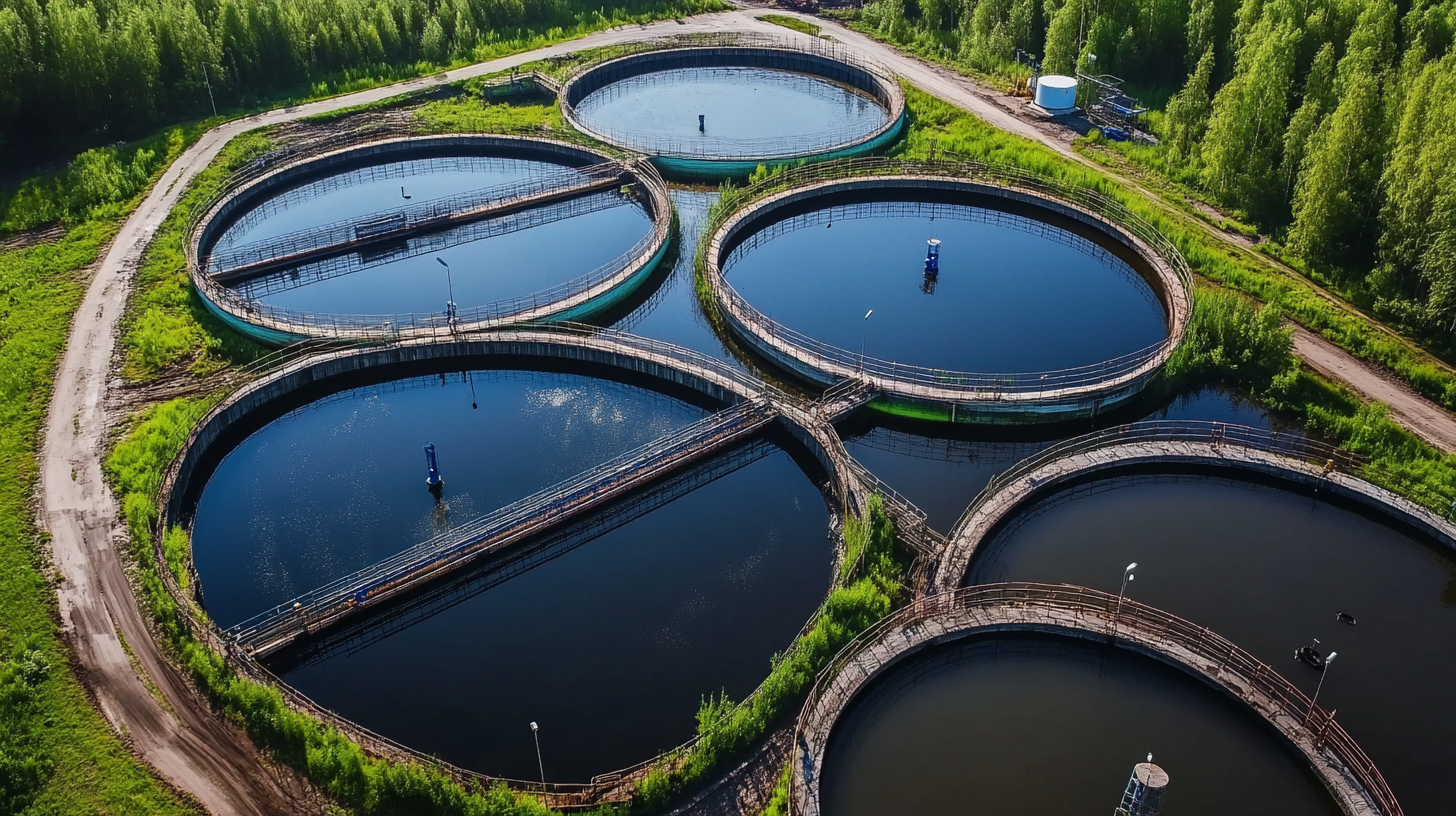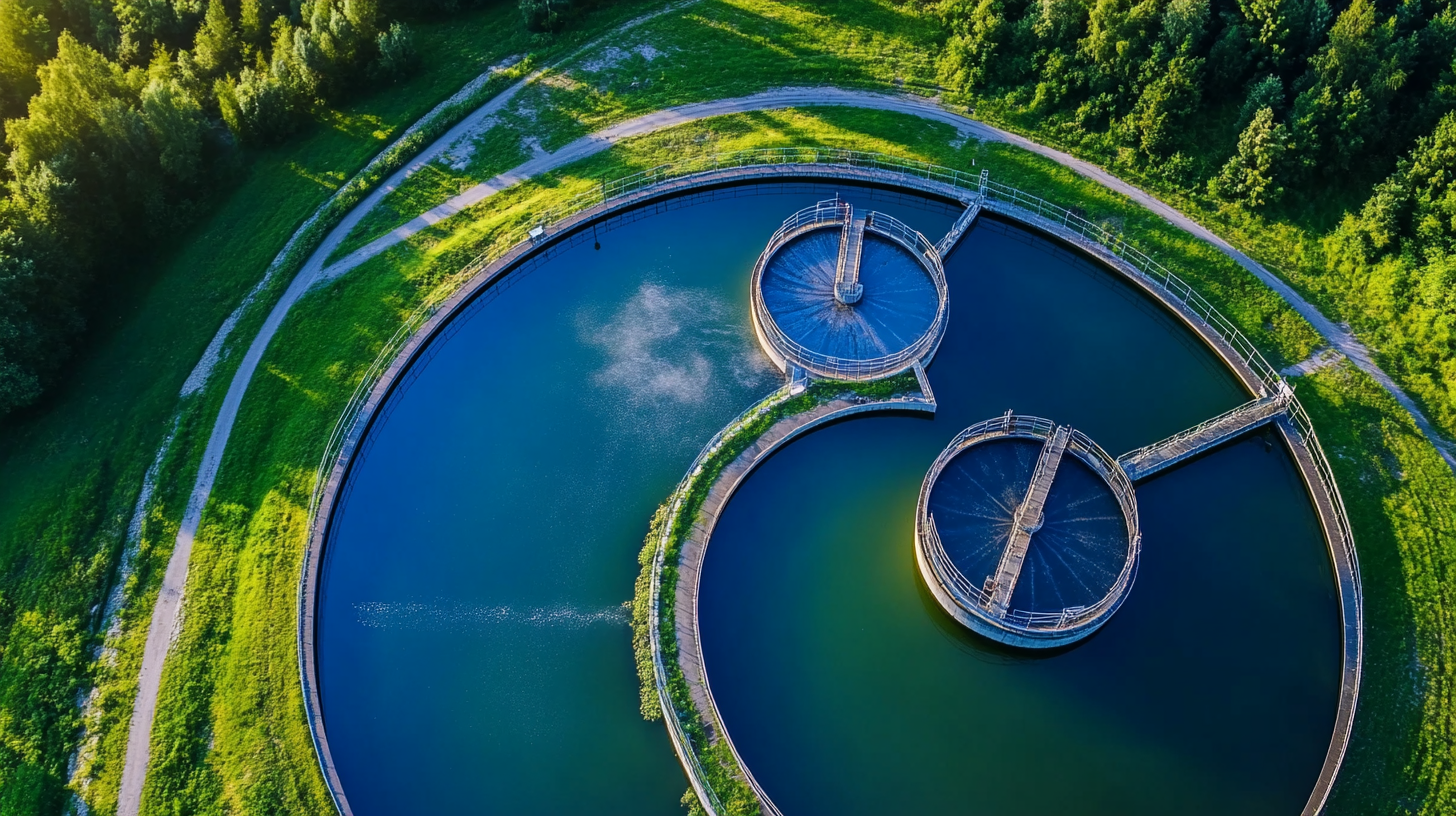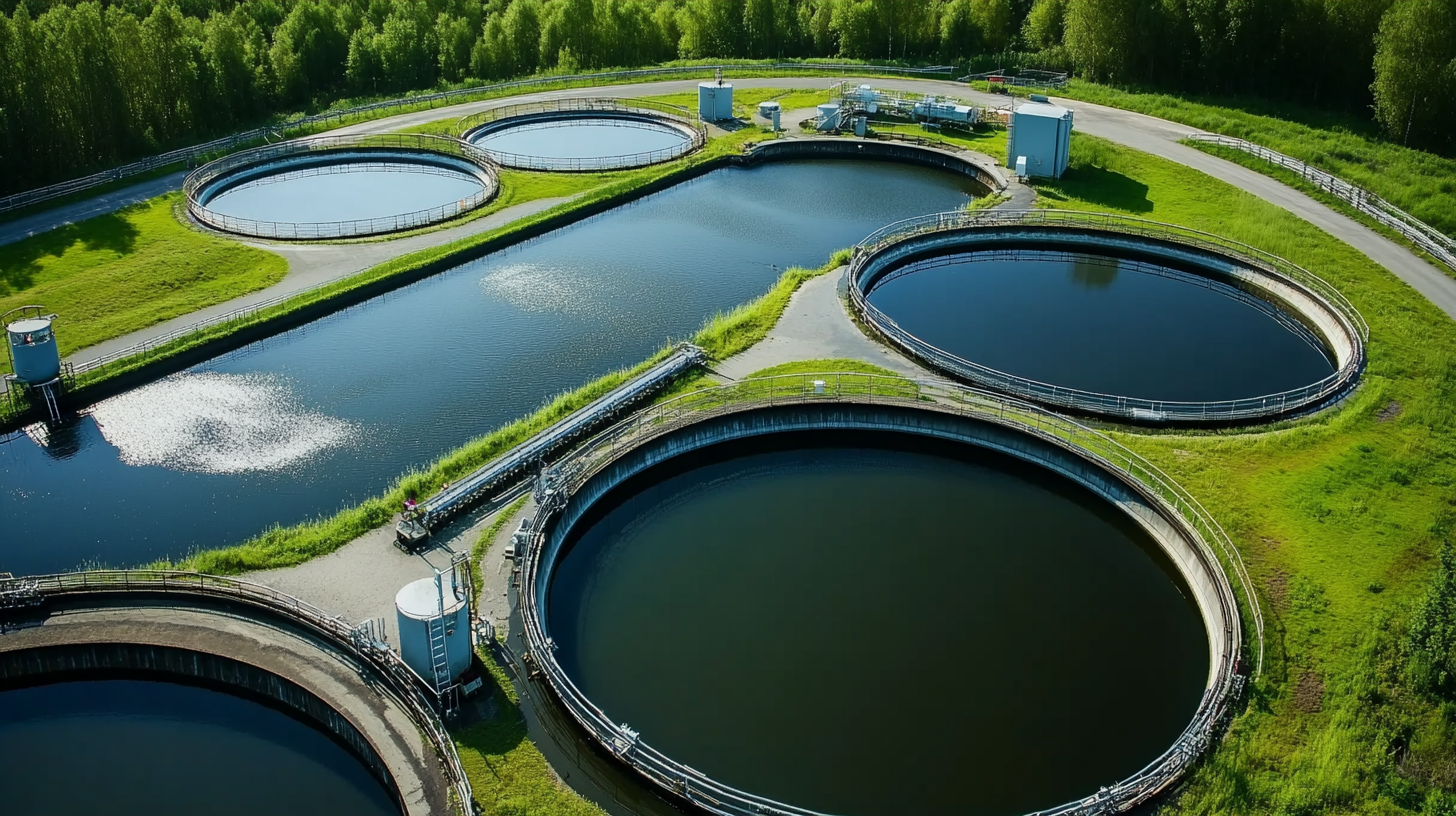 In the ever-evolving landscape of the Wastewater Treatment Industry, the adoption of innovative best practices is crucial for enhancing efficiency, sustainability, and overall water quality. As water scarcity and environmental concerns continue to rise, the industry is increasingly focused on implementing advanced technological solutions and strategic methodologies that not only meet regulatory standards but also contribute positively to the ecosystem. This blog explores several innovative examples of best practices within the industry, highlighting the myriad benefits these approaches bring—not just in terms of operational costs, but also in promoting environmental stewardship and public health. By examining these advancements, we can better understand how the Wastewater Treatment Industry is poised to tackle current challenges while paving the way for a more sustainable future.
In the ever-evolving landscape of the Wastewater Treatment Industry, the adoption of innovative best practices is crucial for enhancing efficiency, sustainability, and overall water quality. As water scarcity and environmental concerns continue to rise, the industry is increasingly focused on implementing advanced technological solutions and strategic methodologies that not only meet regulatory standards but also contribute positively to the ecosystem. This blog explores several innovative examples of best practices within the industry, highlighting the myriad benefits these approaches bring—not just in terms of operational costs, but also in promoting environmental stewardship and public health. By examining these advancements, we can better understand how the Wastewater Treatment Industry is poised to tackle current challenges while paving the way for a more sustainable future.
Innovative technologies are playing a transformative role in the wastewater treatment industry, leading to more efficient, sustainable, and eco-friendly solutions. According to the Global Water Intelligence report, the global wastewater treatment market is expected to reach $258 billion by 2026, indicating a growing commitment to improving infrastructure and adopting advanced technologies. One notable example is the use of membrane bioreactors (MBRs), which combine conventional biological treatment with membrane filtration, enabling higher quality effluent, reduced footprint, and lower energy consumption. A study highlighted that MBR systems can achieve over 90% removal of suspended solids and more than 90% reduction in biological oxygen demand (BOD), making them a superior alternative for urban areas facing rapid population growth.
Another innovative technology reshaping the landscape is the use of advanced oxidation processes (AOPs), which facilitate the breakdown of stubborn pollutants that traditional methods often struggle to remove. The Water Environment Federation reports that AOPs can reduce chemical oxygen demand (COD) by up to 80% in certain applications. Moreover, the integration of artificial intelligence (AI) into wastewater treatment allows for real-time monitoring and optimization of operations, reducing operational costs and improving effluent quality. As these technologies continue to evolve, they represent a pivotal shift towards smarter, cleaner wastewater management practices that align with global sustainability goals.
This chart displays the percentage adoption of various innovative technologies in the wastewater treatment industry over the past five years. The data highlights the growing trends towards more efficient and sustainable solutions.
In the wastewater management industry, achieving compliance with environmental regulations is paramount to both operational success and public health protection. Innovative best practices are crucial for organizations striving to adhere to the strict guidelines set by environmental agencies. One example is the implementation of robust sampling and monitoring systems that not only fulfill compliance requirements but also enhance process control. By establishing a clear process control plan and making timely operational adjustments, facilities can optimize their treatment processes while mitigating risks associated with non-compliance.
Another essential aspect involves the adoption of tailored solutions for industrial wastewater treatment. As industries face unique challenges, customizing systems – whether through modifications to existing equipment or the development of fully automated treatment solutions – allows facilities to manage their specific wastewater profiles effectively. Additionally, risk management frameworks for biosolids underscore the importance of maximizing resource recovery while ensuring adherence to safety standards. Such practices highlight a proactive approach to compliance, where organizations not only meet regulations but also contribute positively to environmental sustainability.
| Best Practice | Description | Key Benefits | Compliance Aspect |
|---|---|---|---|
| Advanced Filtration Systems | Utilization of microfiltration and ultrafiltration membranes to remove contaminants. | High pollutant removal efficiency, reduced chemical usage. | Enhanced regulatory compliance with discharge standards. |
| Biological Treatment Innovations | Implementation of biofilm reactors and sequencing batch reactors. | Effective reduction of organic material, lower sludge production. | Meets or exceeds organic matter removal requirements. |
| Energy Recovery Systems | Using anaerobic digestion for biogas production. | Reduction in energy costs, renewable energy generation. | Compliance with sustainability goals and carbon reduction. |
| Re-use of Treated Wastewater | Implementing systems for treating and re-using effluent for non-potable uses. | Conserves water resources, reduces discharge volumes. | Adherence to water reuse regulations. |
| Real-Time Monitoring Systems | Incorporating sensors and data analytics for process optimization. | Improved operational efficiency, quick response to system changes. | Ensures continuous compliance monitoring. |
 In the wastewater treatment industry, optimizing efficiency is crucial for both environmental sustainability and cost-effectiveness. According to a study by the Water Environment Federation, the adoption of advanced technologies can enhance treatment capacity by up to 30% while reducing energy consumption. Implementing vertical flow reactors and membrane bioreactors (MBRs) has shown significant improvements in nutrient removal and overall performance. These innovative methods not only streamline operations but also adhere to stricter environmental regulations.
In the wastewater treatment industry, optimizing efficiency is crucial for both environmental sustainability and cost-effectiveness. According to a study by the Water Environment Federation, the adoption of advanced technologies can enhance treatment capacity by up to 30% while reducing energy consumption. Implementing vertical flow reactors and membrane bioreactors (MBRs) has shown significant improvements in nutrient removal and overall performance. These innovative methods not only streamline operations but also adhere to stricter environmental regulations.
To further enhance wastewater treatment efficiency, consider implementing real-time monitoring systems. These systems provide valuable data that can help operators make informed decisions, thus minimizing resource wastage. Additionally, regular staff training on the latest treatment methodologies can empower teams to adapt and innovate continuously.
Tip: Explore the integration of artificial intelligence for predictive maintenance. By analyzing historical data, AI can foresee potential equipment failures, reducing downtime and maintenance costs.
Tip: Ensure that your processes are aligned with the latest compliance standards. Keeping up with evolving regulations will not only safeguard your operations but also position your facility as a leader in sustainable practices.
In the wastewater treatment industry, the role of import-export certification cannot be understated. These certifications ensure that technologies and solutions meet international standards, promoting safety and environmental protection. By adhering to these guidelines, companies can streamline their operations, enhance their credibility, and expand their market reach. This is crucial as governments and regulatory bodies increasingly emphasize compliance with best practices in wastewater management, ensuring that the imported or exported equipment is efficient and sustainable.
Tip: Always verify the certification status of any equipment or technology before import or export. This can save time and money by avoiding compliance issues down the line.
Moreover, businesses that invest in certified treatment technologies often reap significant benefits, including reduced operational costs and improved efficiency. For instance, certified systems are typically designed to optimize energy consumption and minimize waste production, directly contributing to the sustainability goals of organizations.
Tip: Engage with suppliers who have a proven track record in providing certified solutions to ensure you are receiving the best practices in technology and compliance.
In the wastewater treatment sector, implementing sustainable practices is crucial for enhancing efficiency and minimizing environmental impacts. One effective approach is the integration of advanced technologies such as membrane bioreactors and anaerobic digestion. These methodologies not only improve the quality of treated water but also enable energy recovery, turning waste into a valuable resource. By investing in these innovative solutions, facilities can significantly reduce their carbon footprint while promoting circular economy principles.

